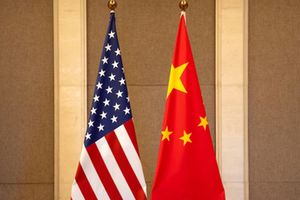Lonely at the top? Here’s why it doesn’t have to be that way

‘It’s lonely at the top’ – so the maxim goes, meant to buttress the argument that the higher you go in leadership, the lonelier you become.
This school of thought stems from the realisation that being at the top means carrying the entire organisation on your back, which can be overwhelming. This realisation in turn gives rise to the mantras that, ‘if it is to be, it is up to me’ or, ‘the buck stops here’, which, if applied ‘inappropriately’ by those at the top, could be deceptive and detach leaders from those that they should be pooling resources with.
As it is, the notion of loneliness at the top is real and can be surprisingly unsettling as has been reinforced by a survey that shows that half of the CEOs interviewed in a poll reported experiencing ‘feelings of loneliness’ in their role. “The realisation that you are no longer part of the ‘lesser’ team but a figurehead that everyone looks upon for all the answers” was the key driver to this feeling. Of the group surveyed, 61 percent believed the loneliness feeling hindered their performance.
The question though is: ‘Does it really have to be lonely at the top?’
In my opinion, it does not, because I believe good leaders should have the requisite knowledge to adopt various ways and means to placate their feeling of loneliness and find even greater purpose for being at the top.
To start with, there are a couple of pre-emptive remedies that a leader can utilise to do away with perceived loneliness. Firstly, they must try to settle down and align with subordinates. They must avoid being an island unto themselves and assure the team that though they might be at the top, they are actually a part of the team.
Next, they must try to build a select, genuine team that fully understands their agenda and that is ready to unequivocally advocate, implement and cascade that agenda to the rest of the organisation. This should be a team with an uncontested loyalty to the organisation and with a tested history of putting its interest above their own personal or professional standing. Once this trust is inculcated, they will have started on the right footing and therefore, entrenched themselves into the organisation as a whole. The agenda will be understood as a joint agenda with a joint commitment towards achieving it. The leader will thus be seen more as the driver of the agenda rather than as the sole owner with a responsibility for only ‘telling’ others what needs to be done.
The leader should then go further afield and try to find reliable and credible sources of advice and counsel especially from former leaders who came before you. These ‘old hands’ might be either retired or still on active duty and have the relevant experience to bequeath to you, thus help you to navigate your way. They will act as credible partners in what would otherwise be a ‘lonely zone’. It’s important to note though that these advisors only help you construct decision criteria. It will be upon you to filter the advice and consider possible alternatives before landing on a decision.
The leader could also consider having an ‘executive coach’, a knowledgeable, hands-on and frank person who, besides providing professional coaching, genuinely cares for their success, fulfilment and ultimately, happiness. This should be a bold person who is ready tell you difficult truths (that the king is err…naked!), all because he cares for your personal success and development.
The biggest mistake many leaders make is to try to be an all-rounder. This leadership blunder creates the ultimate millstone round his/her neck against which they will ultimately choke. It’s important to recognise your limitations. Nobody is omnipotent. Everyone has areas of strengths and weaknesses and it’s not possible for one person to have all the answers. Relieving yourself from this millstone gives you the ability to concentrate on and polish the skills that you are naturally good at so as to implement your agenda with perfection. It also helps you recognise the strengths in others which you can use to build your joint agenda and is ultimately the best tool in helping develop others.
Finally, always remember that as the leader, you have the influence to ensure that you enjoy your stay at the top. Loneliness is a matter of choice. The more people you involve in your leadership, while of course remembering that ultimately the buck stops with you, the more rewarding your time up there will be. Ensure to dedicate sufficient time to groom successors as you were yourself groomed, and always work towards creating a sustainable legacy.
________________________________________________________________
Mark Ocitti is the managing director of Serengeri Breweries Limited





